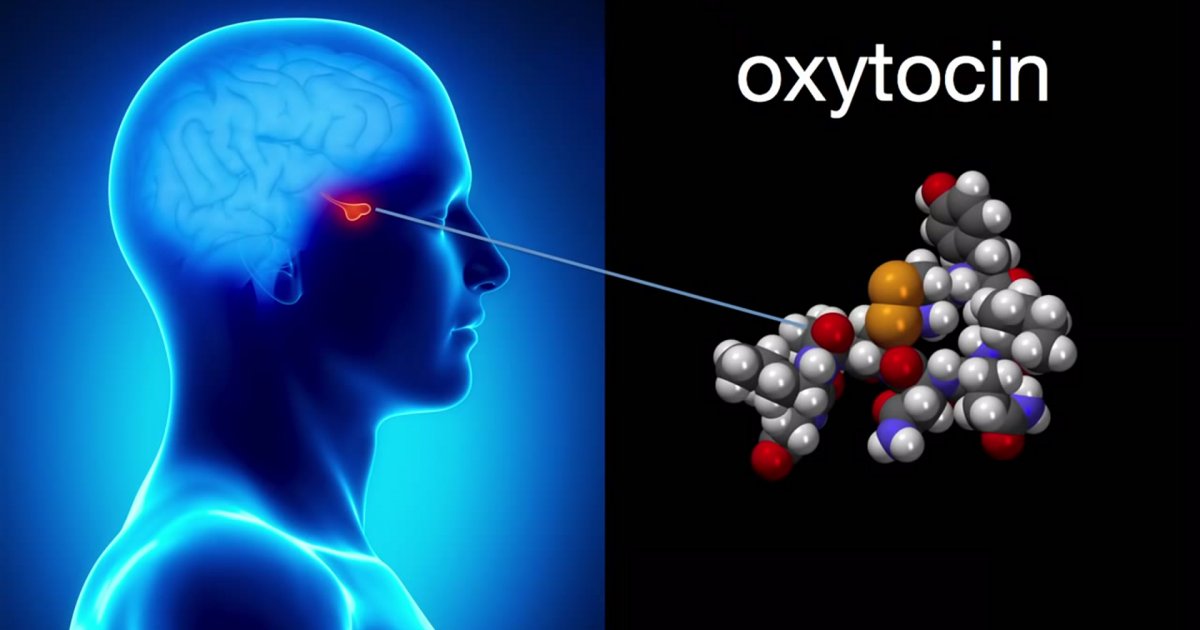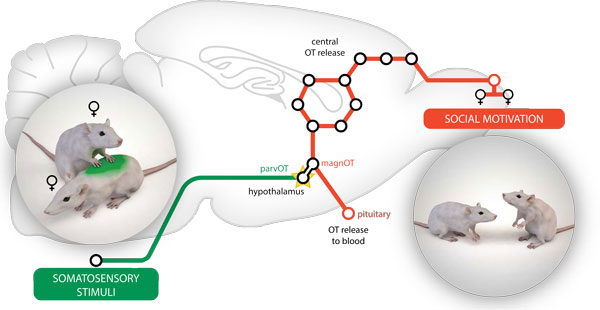Social touch promotes communication via oxytocin
Table of Contents
Table of Contents
Oxytocin is a hormone that plays a crucial role in social bonding, trust, and empathy. It is often referred to as the “love hormone” because of its ability to foster positive social interactions and emotional connections. One fascinating aspect of oxytocin is its impact on touch and how it can enhance communication and conflict resolution in relationships. In this post, we explore the science of oxytocin and touch and why it matters for relationship wellbeing.
What are the potential pain points related to Oxytocin and the impact of touch on relationship communication and conflict resolution?
Many couples struggle with communication and conflict resolution, both of which can be improved by oxytocin and touch. To make matters worse, modern living often reduces the amount of physical touch people experience. This lack of touch can negatively impact mental health, overall wellbeing, and relationship quality. On the other hand, frequent physical touch can help regulate stress, improve mood, reduce anxiety, and build empathy and trust. Thus, the lack of oxytocin and touch can contribute to existing challenges couples face in communication and conflict resolution.
What is the target of Oxytocin and the impact of touch on relationship communication and conflict resolution?
The target of oxytocin and touch is to enhance relationship quality by fostering better communication and conflict resolution that comes with social bonding. Oxytocin is a naturally produced hormone that helps create a positive feedback loop in the brain. When we bond with someone, oxytocin levels increase, leading to greater trust, empathy, and attachment. Increased oxytocin also enhances the brain’s ability to read and interpret social cues, making it easier to understand someone’s emotions and intentions.
Summary of Oxytocin and the impact of touch on relationship communication and conflict resolution
Oxytocin plays a crucial role in social bonding, trust, and empathy. Touch can enhance oxytocin production, leading to better communication, conflict resolution, and relationship quality. In contrast, a lack of touch can result in reduced mental health, mood, and overall well-being.
The Personal Connection: An Account of Oxytocin and the impact of touch on relationship communication and conflict resolution
As someone who struggles with anxiety and social dynamics, I have always been interested in the role of touch and oxytocin in improving communication and conflict resolution. When I met my partner, I was pleasantly surprised by the amount of physical touch we exchanged, which significantly improved my overall mood and social confidence. This touch translated into better communication and conflict resolution, which made our relationship feel more stable and secure. Understanding the scientific basis for this phenomenon has helped me appreciate the importance of touch and how it can improve relationship quality.
The Science: How does Oxytocin and touch impact relationship communication and conflict resolution?
Oxytocin is often called the “cuddle hormone” because of its role in physical touch. Touch stimulates nerve endings that signal the brain to release oxytocin, leading to increased wellbeing and improved social bonding. This hormone also helps regulate stress levels, promoting a sense of calm and security in social situations. This sense of calm can enhance communication by reducing anxiety and defensiveness, making it easier to discuss challenging topics. Furthermore, oxytocin increases empathy and trust, leading to greater understanding and more effective conflict resolution.
Why is Oxytocin and touch critical for couples?
Physical touch plays a crucial role in partner bonding by leading to increased oxytocin levels and heightened emotional connections. Touch can improve mood, reduce stress, and create a sense of security and trust. These factors can increase the likelihood of successful communication and conflict resolution within a relationship. Couples who engage in frequent, affectionate touch may experience a more stable and satisfying relationship compared to those who do not.
How does Oxytocin and touch affect relationships long-term?
Oxytocin, through physical touch, can create a positive feedback loop that fosters social bonds and feelings of contentment. These types of bonds lead to greater attachment and intimacy, forming the foundation of a healthy long-term relationship. Touch also helps regulate stress levels, which can prevent conflicts from spiraling out of control. The enhanced communication that comes with oxytocin and touch can contribute to long-term relationship satisfaction and stability.
The Personal Connection: A Follow-Up on Oxytocin and the impact of touch on relationship communication and conflict resolution
As my partner and I continue our relationship, we have noticed the impact that touch and oxytocin have had on our communication and conflict resolution. By taking the time to engage in frequent physical touch, we can create a sense of trust and attachment that translates into more effective communication and conflict resolution. Touch also helps regulate stress levels, allowing us to approach challenging topics with a clear and calm mind. As a result, our relationship has become more satisfying and stable, thanks to the influence of oxytocin and touch.
Question and Answer
Q: Can Oxytocin help resolve conflicts in relationships?
A: Yes, oxytocin can help resolve conflicts in relationships by increasing empathy, trust, and understanding. This hormone creates a positive feedback loop that fosters social bonds, which can make it easier to address and resolve conflicts in a calm and productive way.
Q: How can I increase my Oxytocin levels?
A: You can increase your oxytocin levels by engaging in frequent physical touch, such as hugs, holding hands, or massage. Other activities that may increase oxytocin include breastfeeding, playing with pets, and engaging in meditation or deep breathing exercises.
Q: How fast does Oxytocin reach the brain?
A: Oxytocin can reach the brain within seconds of a tactile or social stimulus, such as a hug or social interaction.
Q: Is oxytocin only released during touch?
A: No, oxytocin can also be released during positive social interactions, such as talking, laughing, or bonding over shared experiences.
Conclusion of Oxytocin and the impact of touch on relationship communication and conflict resolution
Oxytocin plays a critical role in social bonding, trust, and empathy. Touch can enhance oxytocin production, leading to better communication, conflict resolution, and relationship quality. A lack of touch can result in reduced mental health, mood, and overall well-being. Understanding the science behind oxytocin and touch can help couples appreciate the importance of physical touch and adopt strategies to enhance their relationships.
Gallery
Oxytocin | Oxytocin, Mind Over Body, Psychology Facts

Photo Credit by: bing.com / quotes oxytocin psychology relationship themindsjournal facts
» Human Touch And Our Internal Connection To Beauty Beauty Blog

Photo Credit by: bing.com / oxytocin hormone hug gland brain released porn ted stress pituitary beauty releases when forth author young gary wilson effects talk
Oxytocin- The Love Hormone Or The Hate Hormone? – Scientific Scribbles

Photo Credit by: bing.com / oxytocin hormone hate chemical
Oxytocin: The ‘relationship Crisis Hormone’?

Photo Credit by: bing.com / oxytocin hormone insecurity
Social Touch Promotes Communication Via Oxytocin | Human Frontier

Photo Credit by: bing.com / oxytocin promotes


